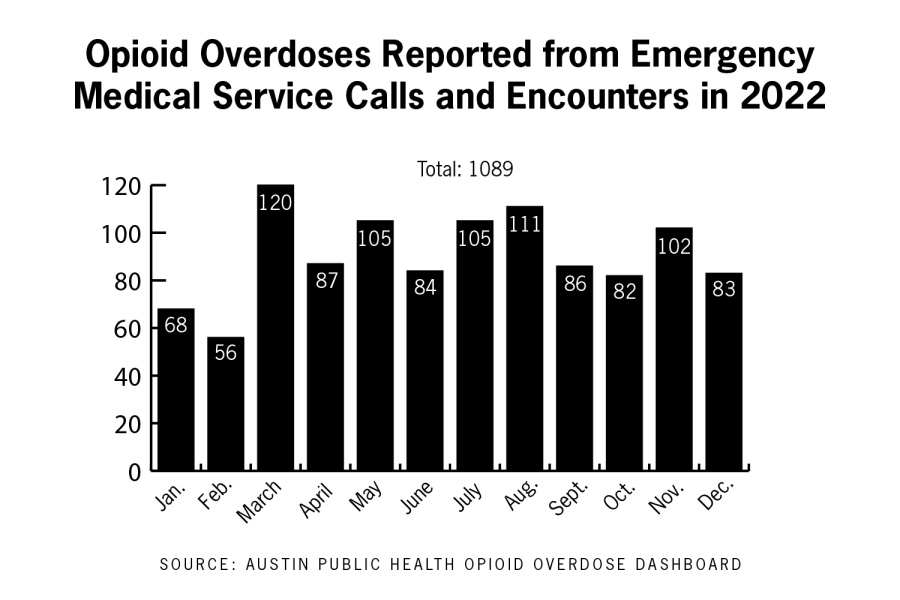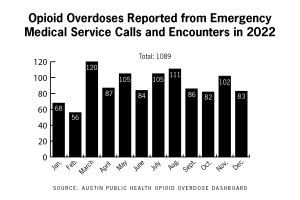Austin Public Health creates new dashboard on opioid overdoses
June 19, 2023
To prevent future overdoses and better understand those most affected by the crisis, Austin Public Health created a new opioid overdose dashboard that gives the public access to data on opioid overdoses.
The dashboard gathers data across multiple sources, including Austin/Travis County EMS, Travis County Health and Human Services and the Travis County Medical Examiner, and allows Austin Public Health to communicate the data to the public in a single location, said Janet Pichette, the chief epidemiologist at Austin Public Health.
“During our COVID response, we set up an initial dashboard, and it grew to be two or three dashboards,” Pichette said. “What will happen in this situation as well, as we get more robust data and information, our dashboard will evolve to provide much better information.”
By including statistics on fatal overdoses, non-fatal overdoses, overdose hospitalizations and Narcan distribution, the dashboard allows epidemiologists at Austin Public Health to analyze which communities are more vulnerable to opioid overdoses. Pichette said visualizing this data in one place will help target prevention efforts and understand the effectiveness of those efforts.
“When I say prevention, it could be outreach efforts like making sure that we get Narcan to certain populations or have it available so bystanders know how to use it and administer it if need be,” Pichette said. “It’s not only the distribution piece, but also the outreach and training on how to use Narcan correctly for innocent bystanders, family members or first responders who might use it as well.”
Longhorn EMS, a student government agency promoting public health, provides drug safety workshops for student organizations through its harm reduction committee. Sachi Kulkarni, a public health senior and the director of the harm reduction committee, said that while the dashboard helps funnel resources where necessary, education should be the main focus.
“If I or any of us can do anything to improve education on how to use Narcan to reverse an opioid overdose, how to recognize overdose symptoms, how to help a friend, and how to save a life, I think that’s really important going forward,” Kulkarni said. “I think that bystanders and strangers and those kinds of people need to be empowered with this type of knowledge because that may be the thing that saves a person’s life.”
Pichette said the overdose dashboard would eventually function as just one piece of a collaborative data hub of many community resources. She said the data hub would include information about where one can obtain Narcan, training resources on how to use Narcan, recovery information and phone numbers to request assistance anonymously.
“We’ve been working with harm reduction and a bunch of community organizations as well as our first responders and other city and county departments to get as much information for the community,” Pichette said. “Hopefully, we’ll be able to collaborate and put that all together in that data, which will provide resources to the community.”













